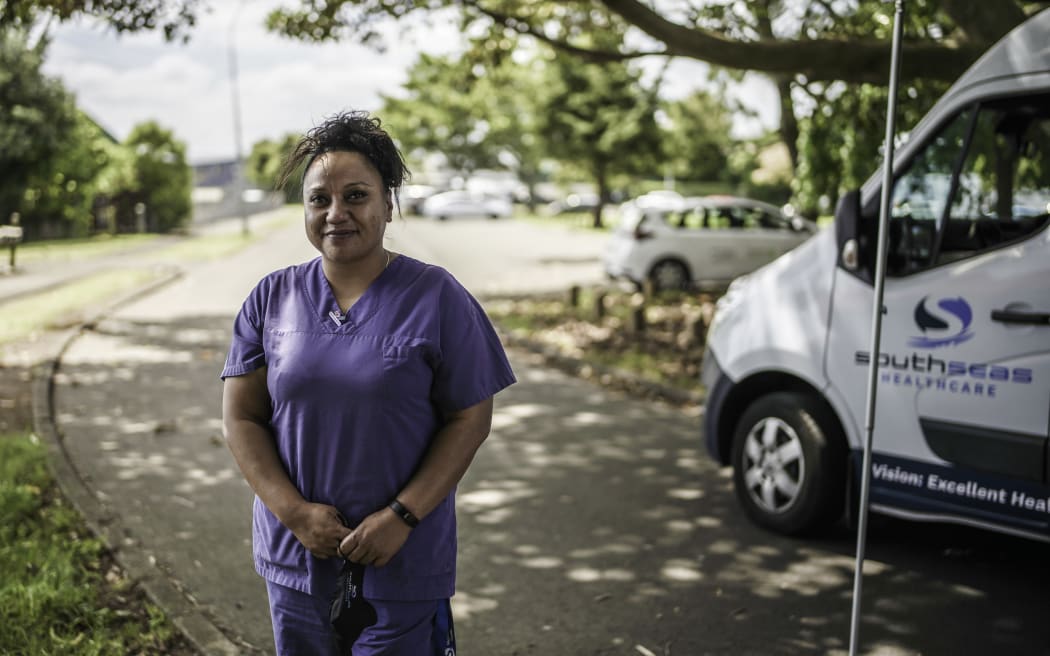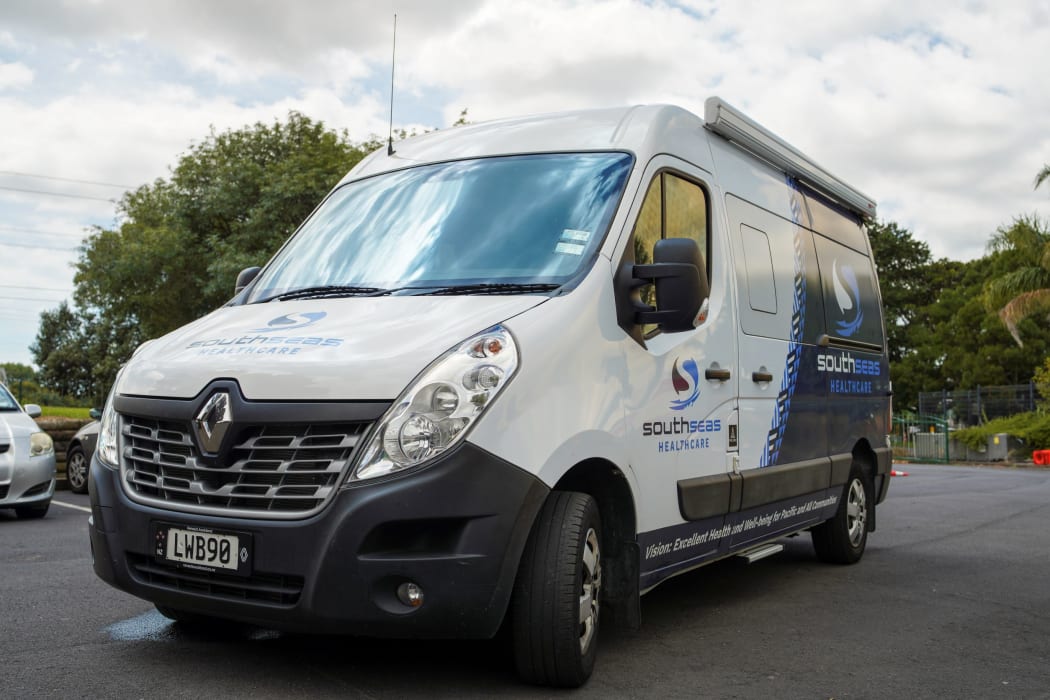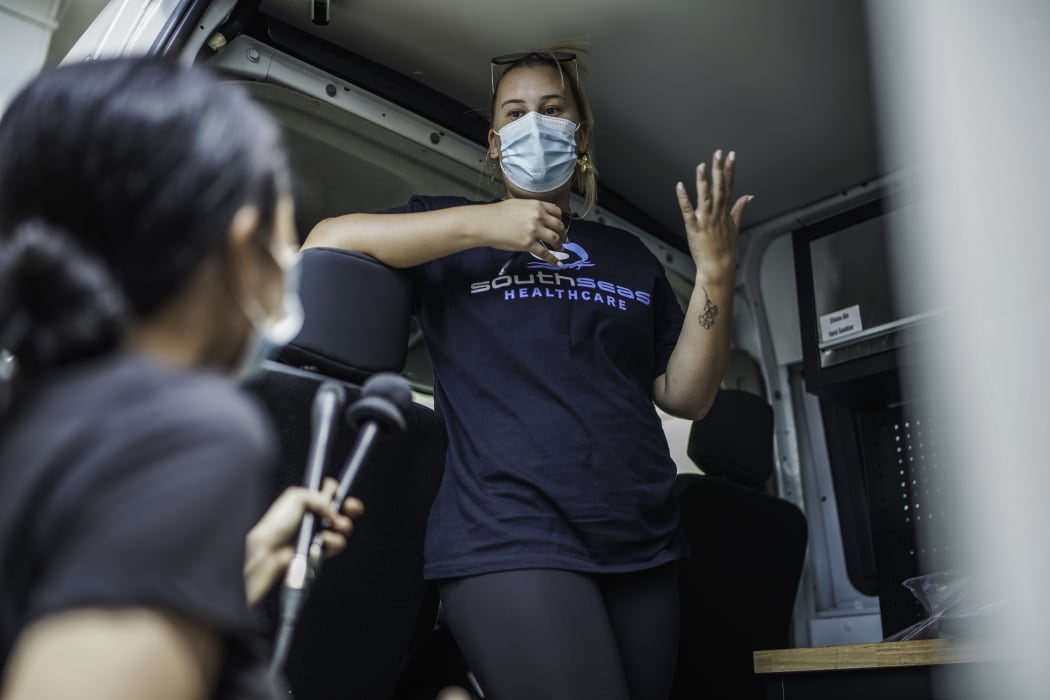
Cherry Elisaia from South Seas Healthcare Photo: Supplied / South Seas Healthcare
The Detail's Jessie Chiang visits the team at South Seas Healthcare in south Auckland, to find out how they're helping families isolating with Covid-19.
Driving through the Otara town centre, in many ways, it’s the same as it’s always been. There are the small fruit and vege shops, people on bicycles weaving across the footpaths and relaxed reggae blasting through speakers. But in other ways, it's different.
There's the big LED roadworks sign set up next to the old MIT building, opposite the McDonalds. It’s not actually there to warn people about roadworks - it's reminding people about who needs to get a Covid-19 test during phase three of the Omicron response.
The carpark behind the town centre, normally home to the lively, bustling Otara market, is now a drive-through testing centre. Big white tents have been set up and bright orange cones mark the way for the slow-moving cars, there to pick up their testing kits.
South Auckland is bearing the brunt of yet another Covid-19 outbreak.
Case numbers change all the time but at the moment, one in five active Covid-19 cases is in the Counties Manukau DHB area. It's one of the country's biggest DHBs and it serves the largest Pacific population and the second largest Māori population.

The South Seas Healthcare mobile van, which goes out to visit isolating families. Photo: Supplied / South Seas Healthcare
Cherry Elisaia from South Seas Healthcare, a Pasifika health and social services provider, says her team knew early on in the Omicron outbreak that case numbers were going to be like nothing they’d ever seen before. She admits a lockdown may not have changed much, given the transmissibility of Omicron, but she wishes they’d pushed harder for one.
“Then maybe we wouldn't be seeing the case numbers we're seeing today.”
Elisaia is the team lead for the South Seas community supported isolation and quarantine (CSIQ) group. It started last November, when at-home self-isolation for Covid-19 cases began. High risk cases get referred to South Seas. The cases and their family get a call before a mobile team heads out to check up on them face-to-face.
That's Tyla Sorensen and Nano Pikule's job. They're one of the four mobile CSIQ teams and I've been invited to go with them on their home visits. The van is stocked with PPE gear and emergency kits including vomit bags, and bottles of hand sanitiser.

Tyla Sorensen in the van. Photo: Supplied / South Seas Healthcare
Our first stop is a family in Ōtāhuhu. We get into our PPE, but as we reach the property there's a locked gate and a sign saying there's a dog on the property.
“This is something that we come across a lot, these kinds of technical issues," says Sorensen. "The family knows we're coming because we call them, but we don't want to enter properties without their permission and if there is a dog on the property, we don't know how they will respond."
Pikule calls up the family and we're given the all-clear.
There's a lot of information to get through once we're talking to them, but Sorensen remembers it well. She goes over food parcels, financial assistance, isolation rules, how and when to use rapid antigen tests and how to use a pulse oximeter.
Sorensen says it's a really rewarding role.
"The earrings I'm wearing right now, they were actually gifted from one of our clients who has an earring making business and she really wanted to show her appreciation to our team for taking care of her family," she says.
Back at the van we quickly dispose of our PPE gear. One visit down, many, many more to go.
Follow The Detail on Apple Podcasts , Spotify, Stitcher, iHeart, Google Podcasts or wherever you listen to your podcasts.
You can also stay up-to-date by liking us on Facebook or following us on Twitter.

PIJF Photo: .

